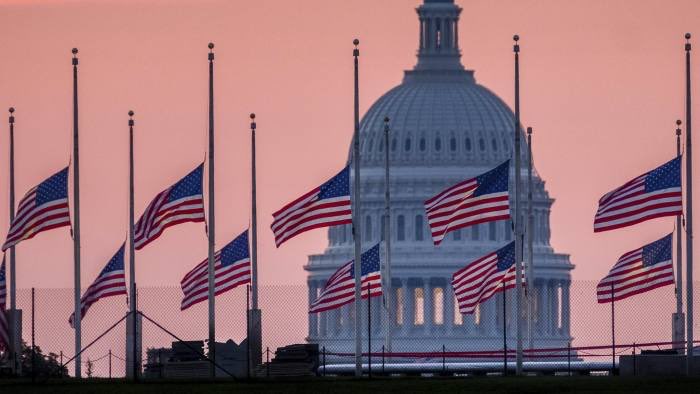Why US homebuilding dropped more than expected in September?

- Country:
- United States
U.S. homebuilding dropped more than expected in September as construction activity in the South fell by the most in nearly three years, likely held down by Hurricane Florence.
Other details of the report published by the Commerce Department on Wednesday were also soft. Building permits declined to their lowest level in almost 1-1/2 years and homebuilding completions were the fewest since November 2017.
The housing market, which has been a weak spot in a robust economy, has been hobbled by an acute shortage of properties for sale, higher home prices and rising mortgage rates. Residential investment contracted in the first half of the year and the latest data supports economists' expectations that housing remained a drag on economic growth in the third quarter.
"The housing market continues to sputter," said Robert Frick, corporate economist at Navy Federal Credit Union in Vienna, Virginia. "The question is if the low level of starts, permits and completions we've seen the last four months is a lull or a slide that won't be corrected until the next recession."
Housing starts fell 5.3 per cent to a seasonally adjusted annual rate of 1.201 million units last month. Data for August was revised down to show starts rising to a rate of 1.268 million units instead of the previously reported pace of 1.282 million units.
Starts in the South, which accounts for the bulk of homebuilding, tumbled 13.7 per cent last month. That was the biggest decline since October 2015. Hurricane Florence slammed North and South Carolina in mid-September and flooding from the storm probably depressed homebuilding last month.
Housing starts also fell 14.0 per cent in the Midwest. They surged 29 per cent in the Northeast and rose 6.6 per cent in the West. Building permits fell 0.6 per cent to a rate of 1.241 million units in September. That was the second straight monthly decline and left permits at their lowest level since May 2017.
Economists polled by Reuters had forecast housing starts declining to a pace of 1.220 million units last month.
The PHLX housing index was trading lower, tracking a broadly weaker U.S. stock market.
The dollar rose against a basket of currencies, while U.S. Treasury yields fell marginally.
RISING MORTGAGE RATES
Rising mortgage rates and higher house prices are making home purchasing unaffordable for some first-time buyers.
The 30-year fixed mortgage rate jumped 19 basis points to 4.90 per cent last week, the highest level since mid-April 2011, according to data from mortgage finance agency Freddie Mac. The mortgage rate has risen about 91 basis points this year.
A separate report on Wednesday from the Mortgage Bankers Association showed applications for loans to purchase a home fell to a 20-month low last week.
While mortgage rates are still low by historical standards, the rise has outpaced annual wage growth, which has been stuck below 3 per cent. House prices have increased by 6.0 per cent on an annual basis and are being driven by the dearth of properties.
The single-family home building, which accounts for the largest share of the housing market, decreased 0.9 per cent to a rate of 871,000 units in September. Single-family homebuilding has lost momentum since hitting a pace of 948,000 units last November, which was the strongest in more than 10 years.
"The flattening of housing construction is essentially in place," said Steven Blitz, chief U.S. economist at TS Lombard in New York. "Wage growth has begun to improve but not enough to give people the necessary income to carry a mortgage - especially for younger families, many still working out from under student loans."
A survey on Tuesday showed confidence among single-family homebuilders rose in October, but builders said: "housing affordability has become a challenge due to ongoing price and interest rate increases."
Permits to build single-family homes rose 2.9 per cent in September to a pace of 851,00 units. They, however, remain below the level of single-family starts, suggesting limited scope for a strong rebound in homebuilding.
Starts for the volatile multi-family housing segment plunged 15.2 per cent to a rate of 330,000 units in September. Permits for the construction of multi-family homes declined 7.6 per cent to a pace of 390,000 units. They have now dropped for six straight months.
With starts and building permits declining last month, housing supply will likely remain tight. That was also reinforced by a 4.1 per cent drop in homebuilding completions in September to a rate of 1.161 million units, the lowest level since November 2017.
Realtors estimate that housing starts and completion rates need to be in a range of 1.5 million to 1.6 million units per month to plug the inventory gap. While the stock of housing under construction increased 0.3 per cent to more than an 11-year high of 1.129 million units last month, the multi-family homes segment accounted for much of the increase.
(With inputs from agencies.)










